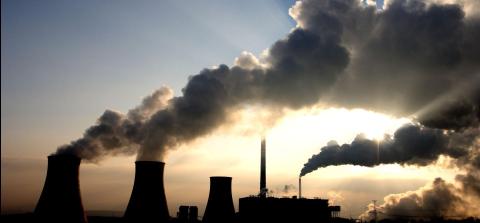China at a crossroads: continued support for coal power erodes China's clean energy leadership
Download Full Report
Key Findings
While financial institutions around the world are moving away from coal to limit exposure to increasing stranded asset risks, global renewable energy champion China is simultaneously funding over one-quarter of coal plants currently under development outside the country.
Chinese financial institutions—both the development finance institutions and state-controlled banks—have committed or offered funding for over one-quarter (102 GW) of the 399GW of coal plants currently under development outside China.
Executive Summary
China was among the top global lenders in outbound clean energy investments in 2017, establishing itself as a world leader in driving a domestic decarbonisation agenda. Yet financing for clean energy exists in tension with the country’s continued investments in fossil fuels, particularly coal.
China is still fuel-source agnostic in international markets, effectively exporting its now increasingly redundant thermal power capacity and expertise. A unit-by-unit analysis of all global coal plants under development, based on the July 2018 Global Coal Plant Tracker, shows Chinese finance playing an increasingly significant role in supporting and funding new coal plants in international markets. Of the 399 gigawatts (GW) of coal plants currently under development outside China, Chinese financial institutions and corporations have committed or offered funding for over one-quarter of them (102GW).
This funding comes as financial institutions around the world are moving away from coal, including the World Bank, most multilateral development banks, and the export credit agencies (ECAs) of the Organisation for Economic Co-operation and Development (OECD) countries. Additionally, many private global financial leaders have come to see thermal coal as a poor investment with growing stranded asset risks (e.g. Standard Chartered UK, Generali of Italy, and Nippon Life of Japan, among others).
While the Chinese government has signalled it will restrict coal lending, the country has yet to formally limit its investment in coal plants. Instead, Chinese finance is increasingly stepping in as the lender of last resort for coal plants, as other banks take active measures to restrict their funding.
Among Our Key Findings:
- US$21.3 billion has been committed to over 30GW of coal-fired capacity across twelve countries, and an additional US$14.6 billion has been proposed in funding for over 71GW across 24 countries, adding up to US$35.9 billion in funding for 102GW of coal plant projects over 27 countries in total.
- The country with the most coal-fired capacity supported by Chinese finance is Bangladesh, followed by Vietnam, South Africa, Pakistan, and Indonesia. About 76GW of the 102GW of capacity is in pre-construction status.
- The 102GW of coal proposals account for over one-quarter (26%) of global coal-fired capacity under development outside China, and over one-third (35%) of coal development outside China and India.
- Many of the coal plant proposals involve larger projects around expensive imported coal terminals or domestic coal mining with dedicated rail infrastructure, creating a costly, long-term structural dependence on coal precisely at a time when electricity costs from renewable power generation are falling below coal power.
- Chinese companies often act as engineering, procurement, and construction (EPC) contractors for the projects, and increasingly as co-managers and owners as well, highlighting the importance the central government now places on the financial returns associated with large project development. Of the 102GW of global coal-fired capacity supported by Chinese finance, 30GW involves joint ownership with Chinese corporations.
- China’s role as coal financier and developer primarily involves state-owned enterprises, with little involvement from private entities. The biggest lenders are Chinese policy banks: China Development Bank and the China Export-Import Bank, followed by Chinese state-owned commercials banks such as the Bank of China (BOC) and the Industrial and Commercial Bank of China (ICBC). The corporations most involved are large state-owned entities, including utility monopoly State Grid Corporation of China, infrastructure group China Energy Engineering Corporation, and power giants State Power Investment Corporation and China Huadian Corporation.
- Most of the capacity under development is categorized as ultra-supercritical technology (38%), followed by supercritical (35%) and subcritical (23%). This compares with subcritical technology making up 58% of plants funded by Chinese policy banks between 2001 and 2016. Yet Chinese finance still supports a high number of subcritical and supercritical plants, lagging the norms in carefully regulated markets.
Funding of these projects leaves China increasingly isolated as other nations move away from supporting coal. While Japanese and South Korean finance are the second and third highest supporters of coal plants globally, Japan’s prime minister and national power giant Marubeni have stated publicly their intention to transition away from thermal coal, along with Japanese insurers Dai-ichi Life and Nippon Life, while South Korea is no longer permitting new coal plants and is increasing coal taxes in a deliberate turn toward renewables. In terms of China at a Crossroads 3 international financing for future coal plants by state-owned policy banks, China is by far the leader with 44GW1 of capacity, followed by South Korea with 14GW and Japan with 10GW.
IEEFA notes China should reconsider its funding for export coal mines, coal-fired power plants, and the associated rail and port infrastructure. The International Energy Agency (IEA) sees renewables contributing 60% of global additions to electricity generation capacity through 2022 and dominating over the next two decades. Already, IEEFA estimates the Chinese Belt and Road Initiative (BRI) has driven US$8 billion of solar equipment exports from China, helping China become the number one exporter of environmental goods and services, overtaking the U.S. and Germany. It makes sense for China to continue to build on its position as the global leader in renewable energy development as the world moves away from fossil fuel-based capacity.
















